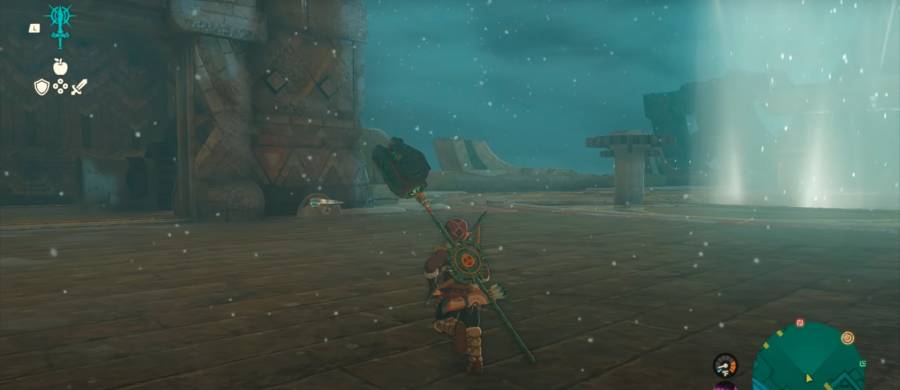Origins of the Zelda Franchise
The Legend of Zelda series, since its inception in 1986, has been a cornerstone of the gaming industry. Its unique blend of action, adventure, puzzles, and exploration set within a richly detailed fantasy world has captivated gamers for decades. From the original game on the Nintendo Entertainment System (NES) to the modern iterations on the Switch, the franchise has consistently pushed the boundaries of what is possible in video game design.
Hyrule’s Genesis
From the outset, the world of Hyrule was a vast, sprawling expanse filled with mystery and danger. The original Legend of Zelda game introduced players to this world, offering a non-linear adventure that was revolutionary for its time.
Link’s Inauguration
Link, the hero of the series, was introduced as a brave, silent protagonist. Over the years, his character has evolved, but the core characteristics of courage and determination have remained constant.

Shaping the Fantasy Realm
The world-building in Zelda games has always been meticulous. Each game adds more layers to the lore, history, and geography of Hyrule, making it one of the most immersive fantasy worlds in gaming.
Milestones in Zelda Gaming
Every new entry in the Zelda series has brought something new to the table, whether it’s a shift in art style, innovative gameplay mechanics, or deeper narrative elements.
Ocarina of Time: A Paradigm Shift
The release of Ocarina of Time marked a significant turning point for the franchise. The transition from 2D to 3D allowed for a more immersive and expansive Hyrule, and the introduction of time travel added a new layer of complexity to the gameplay.
Majora’s Mask: Darker Undertones
Majora’s Mask, the direct sequel to Ocarina of Time, is often remembered for its darker tone and themes. The game’s emphasis on time management and its exploration of death and loss set it apart from other entries in the series.
Wind Waker: A Cartoonish Departure
Wind Waker marked another departure for the series, this time in terms of visual style. Its cel-shaded graphics and cartoonish character designs were initially controversial among fans but have since been widely praised for their creativity and charm.
Technological Advancements in Zelda
The Zelda series has always been at the forefront of technological advancements in gaming. Each new entry has pushed the boundaries of what is possible on Nintendo’s hardware.
Transition to 3D Graphics
The shift to 3D graphics with Ocarina of Time was a game-changer for the franchise. It allowed for more complex level designs, more immersive environments, and more dynamic combat.
Embracing Open-World Concepts
With Breath of the Wild, the series embraced open-world game design. This allowed players unprecedented freedom to explore Hyrule at their own pace and approach challenges in a variety of ways.
Integration of Motion Controls
Games like Skyward Sword integrated motion controls into their gameplay, providing a new level of immersion and interactivity. While not without its critics, this move showed the franchise’s willingness to experiment with new technology.
Tears of the Kingdom: A Comprehensive Overview
Tears of the Kingdom represents the latest evolution in the Zelda series. Building on the foundations laid by previous games, it introduces new gameplay mechanics, narrative elements, and visual styles.
Plot and Narrative Innovations
While maintaining the central conflict between Link and Ganon, Tears of the Kingdom introduces new characters, plot twists, and thematic elements that deepen the narrative experience.
Gameplay Mechanics and Dynamics
Tears of the Kingdom expands on the open-world design of Breath of the Wild, introducing new mechanics such as climbing and paragliding, as well as a more complex combat system.
The Role of the Protagonist in Tears of the Kingdom
Link’s role in Tears of the Kingdom is more dynamic and involved than in previous games. The decisions players make can significantly affect the narrative, adding a new level of depth to his character.
Graphics and Artistic Evolution
The visual style of Zelda games has evolved significantly over the years, from the pixel art of the original game to the detailed 3D models of the latest entries.
Visual Realism vs. Stylistic Choices
While some Zelda games, like Twilight Princess, have leaned towards a more realistic visual style, others, like Wind Waker and Breath of the Wild, have embraced a more stylized aesthetic.
Exploring Breath of the Wild’s Artistry
Breath of the Wild’s art style is a blend of realism and stylization, creating a unique and beautiful world. Its influence can be seen in Tears of the Kingdom, which builds on its artistic foundations.
Technological Enhancements in Tears of the Kingdom
Tears of the Kingdom pushes the graphical capabilities of the Switch to its limits. Its detailed environments, dynamic lighting, and fluid animations represent a new high point for the series.

Musical Score and Sound Design
Music and sound design have always played a crucial role in the Zelda series. The iconic themes and sound effects are as much a part of the franchise’s identity as the Triforce or Master Sword.
The Evolution of Iconic Themes
From the classic Overworld Theme to the haunting Song of Storms, the music of Zelda has evolved alongside the games themselves. Each new entry remixes and reinterprets these iconic themes, while also introducing new compositions.
Tears of the Kingdom’s Musical Identity
The soundtrack of Tears of the Kingdom continues this tradition, providing a musical backdrop that perfectly complements the game’s narrative and gameplay.
The Impact of Music on Gaming Experience
Music in Zelda games is not just background noise. It sets the mood, signals danger, and even serves as a gameplay mechanic, as seen in games like Ocarina of Time and Majora’s Mask.
Open-World Dynamics in Tears of the Kingdom
One of the defining features of Tears of the Kingdom is its open-world design. This approach allows players to explore Hyrule at their own pace, uncovering its secrets and unraveling its story along the way.
Expansive Environments and Realms
The world of Tears of the Kingdom is one of the largest and most detailed in the series. Its diverse biomes, towering mountains, and sprawling cities offer endless opportunities for exploration.
Questing and Exploration Mechanics
The quest system in Tears of the Kingdom encourages exploration by rewarding players for venturing off the beaten path. Whether it’s solving a puzzle in a remote shrine or tracking down a rare ingredient, there’s always something new to discover.
Emergent Gameplay Elements
Emergent gameplay elements, like dynamic weather and wildlife behavior, make the world of Tears of the Kingdom feel alive. These details add depth and immersion to the open-world experience.
Reception and Community Impact
Since its release, Tears of the Kingdom has made a significant impact on both the gaming community and the broader cultural landscape.
Initial Reviews and Critiques
Critics have praised Tears of the Kingdom for its expansive world, innovative gameplay mechanics, and engaging narrative. It has received numerous awards and accolades, cementing its status as one of the best games in the series.
Fan Community Reactions
The fan community has similarly embraced Tears of the Kingdom. From fan art and cosplay to speedruns and lore discussions, the game has sparked a wealth of creative and enthusiastic responses.
Cultural and Gaming Industry Influence
The success of Tears of the Kingdom has had a broader impact on the gaming industry and popular culture. Its open-world design and narrative depth have influenced other games, while its characters and themes have permeated other forms of media.
Legacy of Zelda Games: Influence on the Gaming Industry
The Legend of Zelda series has left an indelible mark on the gaming industry. Its innovative game design, compelling narratives, and memorable characters have influenced countless other games.
Pioneering Game Design Concepts
From its non-linear gameplay to its integration of puzzle-solving and combat, Zelda has introduced several game design concepts that have since become industry standards.
Cultural Impact Beyond Gaming
The cultural impact of Zelda extends beyond gaming. The series has inspired everything from music and art to fashion and film, demonstrating its wide-reaching influence.
Zelda’s Enduring Presence in Popular Culture
With its iconic characters, unforgettable music, and compelling narratives, Zelda has secured its place in popular culture. Its enduring popularity is a testament to its quality and creativity.
Future of the Zelda Franchise
With Tears of the Kingdom, the Zelda series has once again redefined what is possible in a video game. But what does the future hold for this beloved franchise?

Anticipated Innovations in Future Titles
As technology continues to evolve, so too will the Zelda series. Future games will likely continue to push the boundaries of game design, offering new ways to explore Hyrule and engage with its characters.
The Role of Zelda in Shaping Gaming Trends
Zelda has always been a trendsetter in the gaming industry. Its influence can be seen in everything from open-world design to narrative-driven gameplay.
Balancing Tradition and Innovation in Upcoming Releases
One of the challenges facing the Zelda series is balancing tradition with innovation. Future games will need to honor the legacy of the series while also introducing new elements to keep the franchise fresh and exciting.
The evolution of the Zelda series is a testament to the creativity and passion of its developers. With each new game, they redefine what is possible in a video game, pushing the boundaries of technology, narrative, and artistry. As fans eagerly await the next chapter in this beloved series, one thing is certain: The Legend of Zelda will continue to captivate and inspire for years to come.
